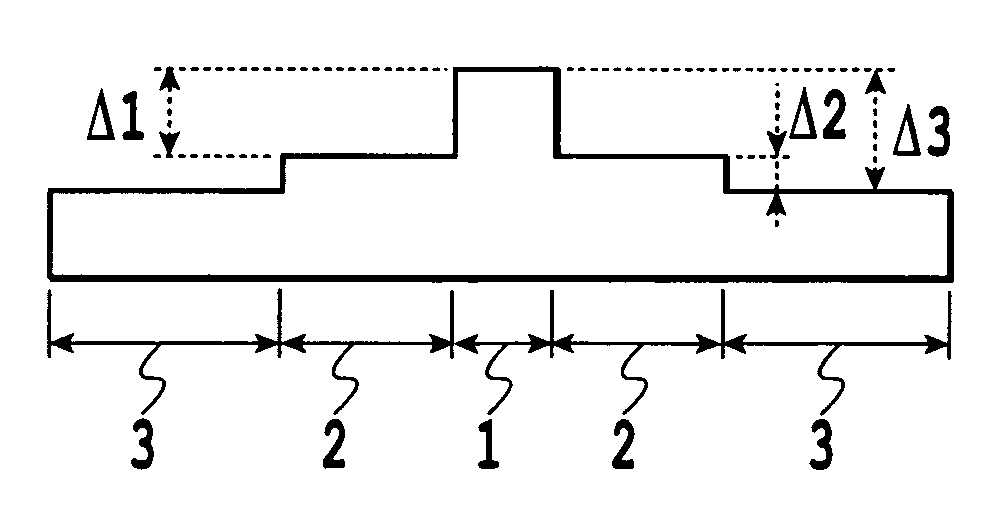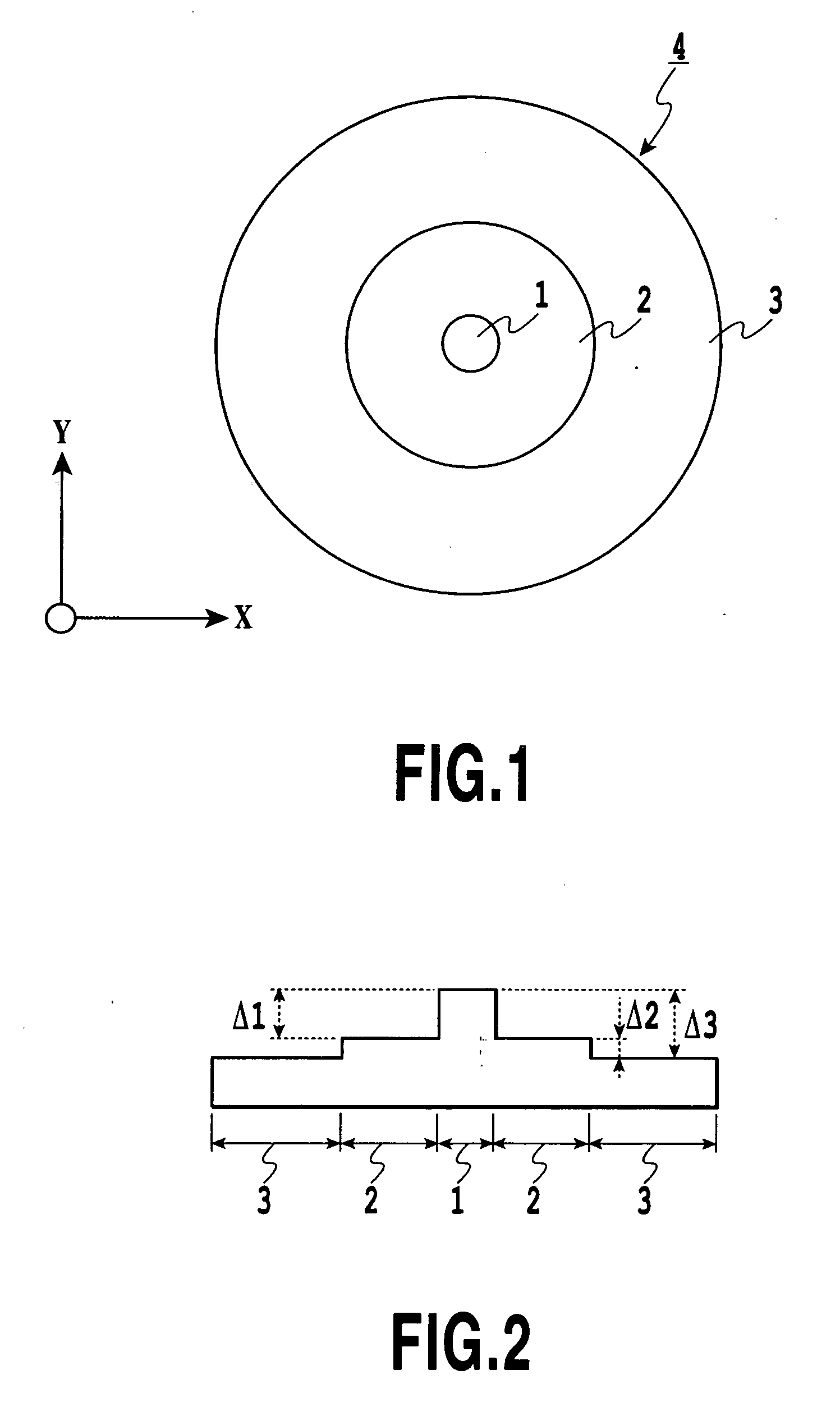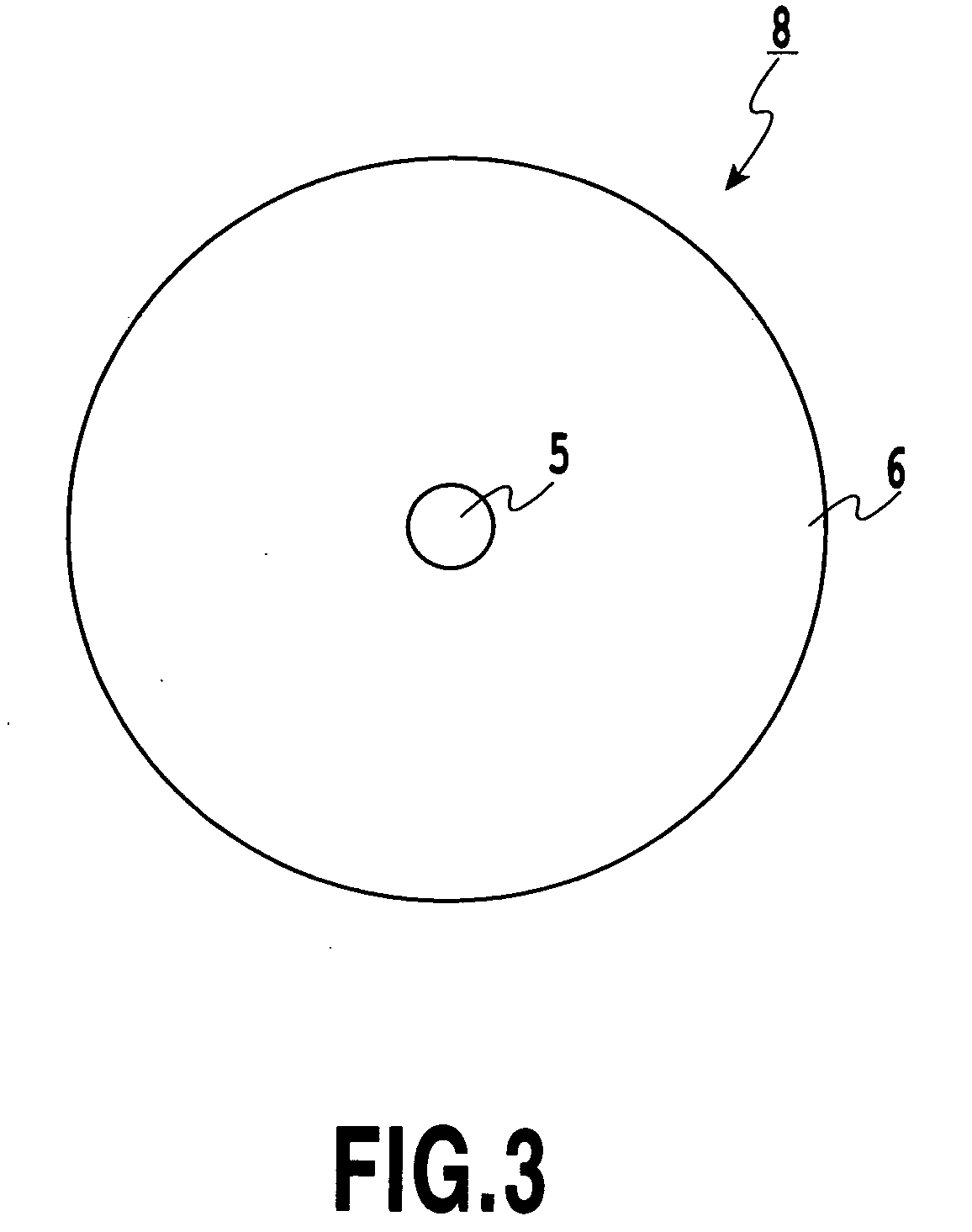Optical fiber and production method thereof
a technology which is applied in the field of optical fiber and production method thereof, can solve the problems of high nonlinearity, high nonlinearity, and inability to achieve high-order modes effectively, high nonlinearity, and high efficiency
- Summary
- Abstract
- Description
- Claims
- Application Information
AI Technical Summary
Benefits of technology
Problems solved by technology
Method used
Image
Examples
example 1
[0210]FIG. 4 shows a cross section of the optical fiber of the example 1 in accordance with the present invention. As shown in FIG. 4, an optical fiber 10 composed of tellurite glass whose zero-material dispersion wavelength is 2.08 μm has a lot of circular air holes 11 which are filled with air. Accordingly, the refractive index of light in the air holes 11 is approximately equal to one, the refractive index of light in a vacuum.
[0211] As for the disposition of the air holes 11 in a cross section in the direction of the diameter of the optical fiber 10, it has a triangular lattice-like arrangement consisting of individual vertices of a lot of triangles placed in such a manner that they are regularly (periodically) adjacent to each other. The air holes 11 have the same structure in the longitudinal direction of the optical fiber 10. In other words, the air holes 11 are disposed uniformly in the longitudinal direction rather than in the photonic bandgap manner disposed three dimensi...
example 2
[0217]FIGS. 8A and 8B each show an optical fiber cross section of an example 2 in accordance with the present invention. In FIGS. 8A and 8B, the reference numeral 21 designates an air hole which is filled with air and has a refractive index of approximately one. The reference numeral 22 designates tellurite glass with the same composition as the sample No.18 of Table 1. A fiber 20 of the present example has a lot of air holes 21 disposed in the entire region of a cross section except for its center in a triangular lattice-like fashion. In addition, the following two types of fibers were fabricated: A first fiber has tellurite glass embedded at the fiber central section 23, which tellurite glass has a zero-material dispersion wavelength of 2.1 μm and a refractive index 1.1% higher than the tellurite glass 22 in terms of the relative refractive-index difference; and a second fiber has a region to become the core for transmitting light by embedding tellurite glass in the fiber central ...
example 3
[0219]FIG. 10A shows an optical fiber cross section of an example 3 in accordance with the present invention. In FIG. 10A, the reference numeral 21 designates an air hole which is filled with air and has a refractive index of approximately one. The reference numeral 22 designates tellurite glass with the same composition as the sample No.15 of Table 1. A fiber of the present example has a lot of air holes 21 disposed in the entire region of a cross section except for its center in a triangular lattice-like fashion, and a region 24 to become a core for transmitting light is formed. The outside diameter D of the fiber is 105 μm. In addition, as illustrated in FIG. 10B, the air hole diameter d is 1.2 μm, the air hole spacing Λ is 1.5 μm, and the diameter a of the core for transmitting light is 1.8 μm.
[0220] The fabricated fiber was cut and polished, followed by observing a near field pattern (NFP) and far field pattern (FFP), thereby confirming that the light was confined in the fiber...
PUM
| Property | Measurement | Unit |
|---|---|---|
| zero-material dispersion wavelength | aaaaa | aaaaa |
| refractive index | aaaaa | aaaaa |
| diameter | aaaaa | aaaaa |
Abstract
Description
Claims
Application Information
 Login to View More
Login to View More - R&D
- Intellectual Property
- Life Sciences
- Materials
- Tech Scout
- Unparalleled Data Quality
- Higher Quality Content
- 60% Fewer Hallucinations
Browse by: Latest US Patents, China's latest patents, Technical Efficacy Thesaurus, Application Domain, Technology Topic, Popular Technical Reports.
© 2025 PatSnap. All rights reserved.Legal|Privacy policy|Modern Slavery Act Transparency Statement|Sitemap|About US| Contact US: help@patsnap.com



